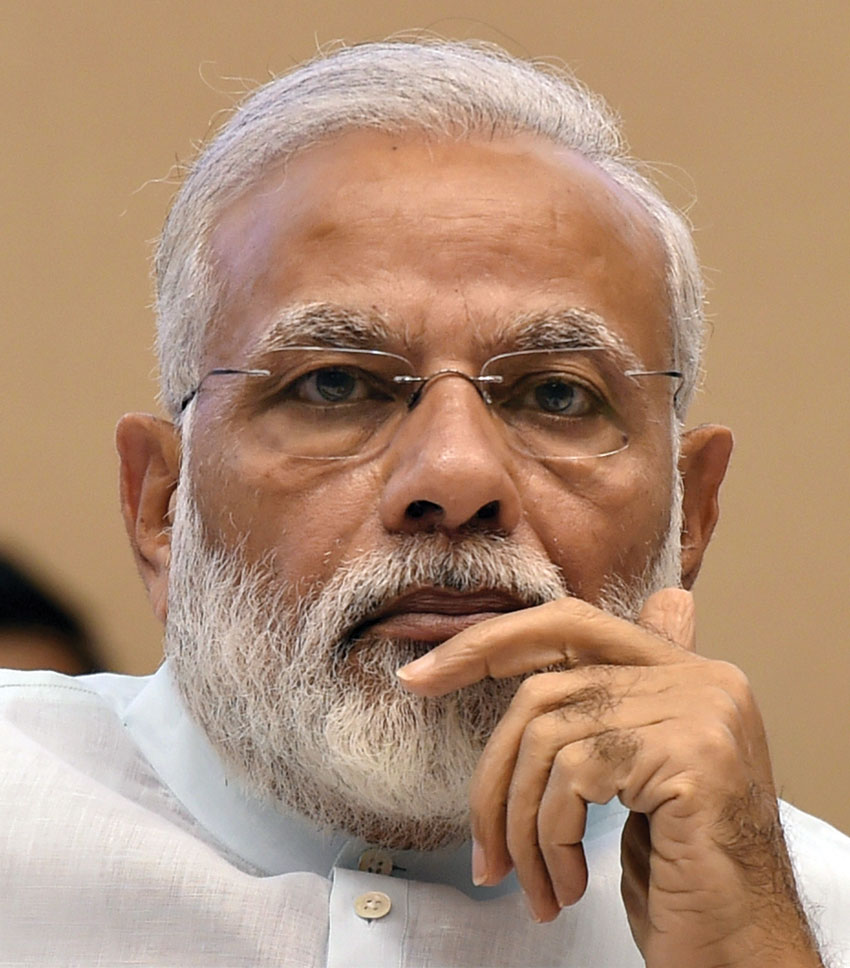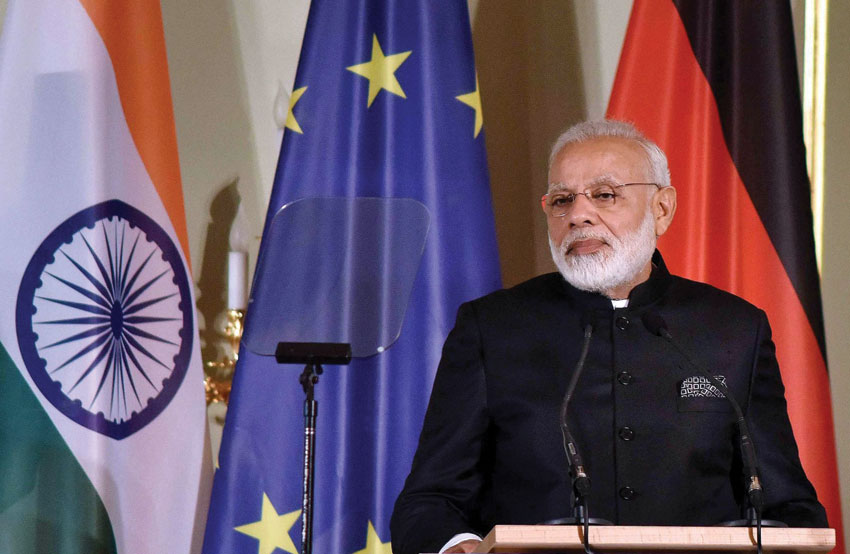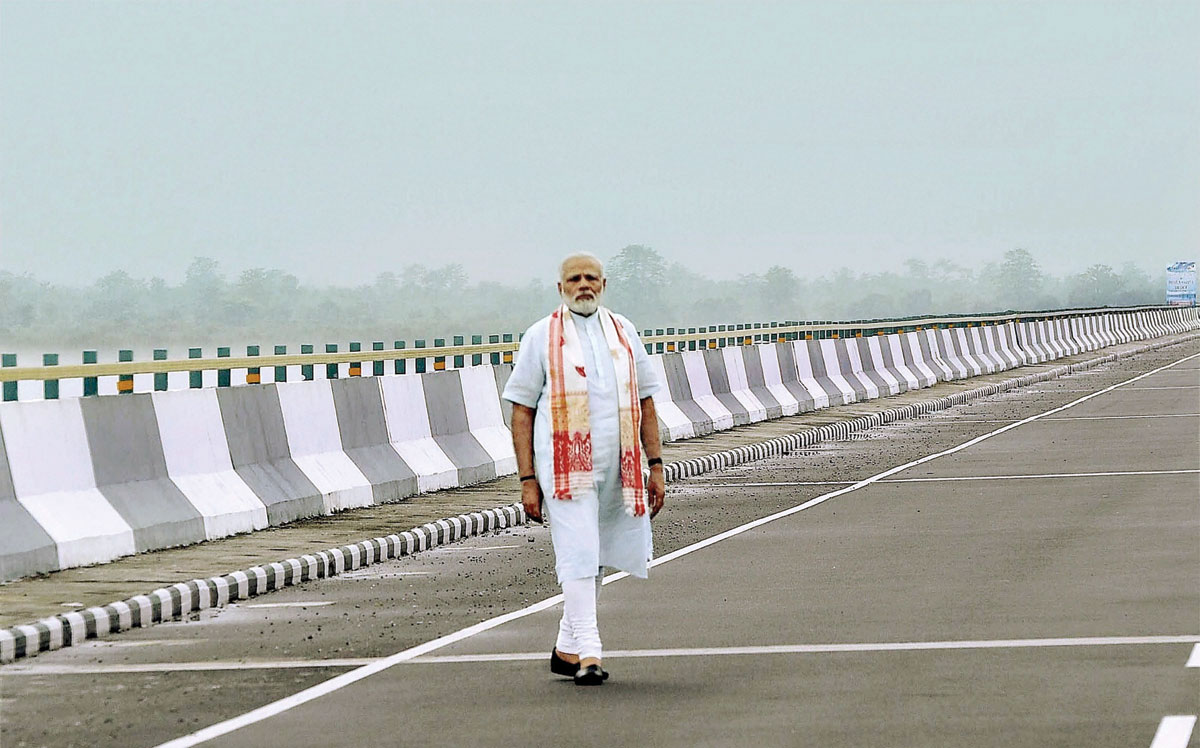Assessing Three Years of Modi Government
Prime Minister Narendra Modi at the newly-inaugurated Dhola-Sadia bridge, the country’s longest river bridge, in Assam, May 26. The three-lane, 9.15 km long bridge has been built over river Lohit, a tributary of river Brahmaputra. (Press Trust of India)
There has been multiple analysis on three-years of Modi government. Naturally, the views have been varied and often extreme. Some have extolled the virtues of the Prime Minister for leading a corruption free administration with nobody in the opposition good enough to challenge his position and persona. Others have criticized Modi for not doing enough to check the fringe Hindutva elements who have been emboldened under the BJP rule, writes Siddharth Srivastava.
Modi has been fairly successful at strategically building stronger ties with India’s neighboring countries, with the exception of Pakistan, and China to some extent, and has created an image of India as a superpower that the country has never before experienced under any government.
He has also managed to unite most of India as a country under one political party that was not the case for the past decade, since the Indira, Rajiv era.
On another note, under Modi, the issue of cow slaughter and banning beef has been heavily politicized. Gau rakshaks brazenly break the law, with the beef-consuming Muslim community the victim of the violent vigilantism. Meanwhile, Kashmir continues to burn, with no end in sight to the mindless clashes between the Army and stone pelting youth of the state. Some analysts have also spoken about the change in Modi’s focus, from the fickle and difficult-to-please middle classes, to the poor.

While a business-friendly government has its share of supporters especially among the aspirational and educated classes, a pro-poor image can be much more effective in terms of electoral dividends. The impact was visible in BJP’s overwhelming victory in Uttar Pradesh. Demonetization was successfully presented as an instrument to bust the tax-evading rich. There was more to show, in the form of free LPG connections to the poor. This has been a singular achievement of Modi that has directly impacted the welfare of the impoverished, especially women.
The figures speak for themselves. This has been a massive surge in the number of LPG consumers in India that crossed 200 million following record new users in the 2016-17 financial year. There has been a concomitant rise in LPG imports with India expected to purchase from overseas over 1.5 million tons LPG per month over the next three-four years. India’s LPG consumption in 2016-17 rose 9.8 percent to over 21.5 million tons. Of this, 11 million tons were imports making India the world’s second-largest importer of LPG, behind China and ahead of Japan. India’s LPG demand is projected to grow 10 percent in FY 2017-18 and likely to touch 35 million tons by 2031-32. News agency PTI recently reported that India has for the first time ever signed a contract to import LPG from Iran.
Cheap power for all: Along with cooking gas, the Modi government is moving towards another seminal change that will overhaul the lives of the poor and likely make the BJP invincible by 2019 when general elections are due again. It is the availability of cheap power for all.
The Modi government is looking at Rs. 3 per Kwh as the benchmark price for power from all energy sources like thermal, solar and wind in the medium term, India’s power, coal, new and renewable energy minister Piyush Goyal recently said.
“India has seen a 370% growth in renewable-based generation capacity in the past three years. Well-organized and transparent competitive bidding processes have driven tariffs for solar and wind below Rs 3 per unit. The government’s aim is to ensure power at Rs 3 per unit irrespective of source,” Goyal said. It is important to understand that multiple sources of power need to quote similar tariffs. This is because debt-strapped distribution companies or discoms, the main bulk consumers of power in India, are very sensitive to pricing. In the past, discoms have shunned buying solar, despite statutory purchase obligations, due to higher cost of purchasing the clean energy source. Solar tariffs have, however, been on a downward spiral due to dropping equipment costs and easier availability of capital.

Solar rates in India are now nearing grid parity rates. Last month, solar tariffs hit a record low with NTPC’s 250 MW project at Kadapa in Andhra Pradesh awarded at flat Rs 3.15 per Kwh. The previous record was Rs 3.3 per Kwh leveled tariff awarded in February, for the 750 MW Rewa solar project in Madhya Pradesh.
Competition from solar has prompted New Delhi to hasten the process of permitting open commercial mining of coal for the first time in four decades. Apart from production gains, the aim is to enable thermal power to compete with solar.
“Commercial mining will attract efficient power sector players who will invest in a big way and bring in that efficiency, ultimately reducing prices,” coal secretary Susheel Kumar said recently. Wind energy developers also understand now that the days of high preferential feed-in-tariffs (FiT) are over. This follows the first auction of 1000 MW wind energy projects by the government in February when tariffs dropped below Rs 3.5 Kwh. Turbine makers such as India’s Suzlon, German Senvion and Denmark’s Vestas expect higher volumes and growing market will compensate for thinner margins. “Auctions are impacting margins but it doesn’t scare me because volume is what matters and I want to compete on the cost of energy, not that of a turbine,” Senvion India CEO Amit Kansal said recently.
New LPG connections and cheap power for all could very well be the twin achievements on which the BJP under Modi will ride to power again in 2019.


